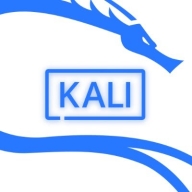

CentOS and Kali Linux operate in different areas within the Linux ecosystem. CentOS stands out for its performance in server environments, while Kali Linux excels in security tasks.
Features: CentOS features include stability, compatibility with Red Hat, and strong community support. It is ideal for server environments, offering ease of integration and extensive hardware support. Kali Linux caters to security needs with its pre-installed toolkit, providing tools for penetration testing and security analysis.
Room for Improvement: CentOS could enhance scalability, user-friendliness, and security features. Feedback suggests bolstering support options and system updates. Kali Linux could benefit from improved GUI interfaces, easier setup for newcomers, and more AI capabilities.
Ease of Deployment and Customer Service: CentOS supports on-premises and hybrid cloud deployments, but relies on community forums for support due to its community-driven nature. Kali Linux focuses on on-premises security deployments, also depending heavily on community resources for support.
Pricing and ROI: Both CentOS and Kali Linux are open-source and offer cost savings. CentOS has optional paid support available through Red Hat, which users appreciate for its cost-effectiveness, while Kali Linux provides significant value with a free, security-feature-rich platform. Enterprise editions may come with licensing options.
We have saved approximately 50% of our revenue by using CentOS.
It saved a lot of time through troubleshooting, which gives us substantial room for improvement in terms of fixing things.
Integrating Kali Linux with DevOps tools has resulted in reduced operational costs due to automated test cases, making it a worthwhile investment with significant returns by decreasing the attack surface area and the frequency of attack incidents.
If we had installed it on-premises or through other means, it would have incurred significant money and effort to create the VMs, deploy it on machines, and then delete and format it after use.
I have saved time by avoiding the lag I sometimes face on the TryHackMe in-built machine, and I have learned more efficiently.
I would rate the customer support for CentOS a 10 on a scale of 1 to 10.
I've seen many people across the globe interacting, and when users encounter issues, the community provides solutions.
I would rate the documentation about eight in terms of usefulness.
Since most of the tools and other things are community-based, the documentation and other community support are very good.
CentOS is scalable and user-friendly without requiring complex configurations.
It allows users to scale resources vertically for upgrading hardware and horizontally by adding more servers, making it suitable for modern web hosting and containerized applications.
CentOS's scalability for my organization has handled growth and changing needs smoothly.
CentOS is stable, reliable, flexible, and very useful.
CentOS's simplicity and stability make it easy to use.
I believe CentOS is stable, but we are gradually moving away from it.
The documentation and support could be improved, along with compatibility with newer hardware as hardware continually evolves over time.
Kernel parameters, sysctl config details, tuned profiles, process prioritization, optimized disk, and input scheduler choice are all points for performance optimization.
CentOS removed long-term support, and version releases every two to three years are not ideal for production environments because they necessitate frequent updates.
If real-time customized port scanning can be added, for example, instead of a default port such as 8080 or 443, if we can use a customized port such as 9876, that capability would be great.
Making Kali Linux more customizable would allow users to personalize it to their style.
It's still advertised as a Linux distro used only for security testing, and many of the tools run as root by default or with the highest privileges.
There was no cost in terms of deploying it or getting the license for it.
CentOS is a free product with free updates.
The enterprise subscription cost is at a certain level, but CentOS saves customers from paying additional money, optimizing costs for enterprises and startups involved in application development.
Kali Linux is free software, an operating system that's available to download without any cost or licensing fees.
My experience with pricing, setup costs, and licensing for Kali Linux has been positive, as it operates under an open-source model.
The pricing and the deployment, resource usage are all spot on and clearly defined, making it helpful and useful for me to deploy and calculate costs.
The update cycle changed when CentOS was prioritized for updates, causing stability issues.
In my experience, the best feature that CentOS offers is the network configuration of a device from the command-line interface, which is exceptionally clean.
The best feature CentOS offers is that it's free.
Kali Linux has positively impacted my organization by improving efficiency in penetration testing; its open-source nature permits extensive customization and inclusion of numerous comprehensive pre-installed tools, contributing to a secure network environment with effective monitoring of network applications.
Kali Linux has the capability of real-time data scanning for vulnerability assessment for backend services.
The overall focus on security in Kali Linux is what I find most useful.
| Product | Market Share (%) |
|---|---|
| CentOS | 4.5% |
| Kali Linux | 3.0% |
| Other | 92.5% |


| Company Size | Count |
|---|---|
| Small Business | 30 |
| Midsize Enterprise | 20 |
| Large Enterprise | 26 |
| Company Size | Count |
|---|---|
| Small Business | 9 |
| Midsize Enterprise | 1 |
| Large Enterprise | 8 |
CentOS offers a stable, secure, and compatible environment with Red Hat packages, providing robust performance and cost efficiency. Its lightweight, scalable design and strong community support make it ideal for handling heavy workloads with limited resources.
CentOS is a popular choice for organizations seeking reliable server and virtualization solutions. Known for its robust stability and security, it offers seamless integration and maintenance. However, after a shift from Red Hat, some challenges emerged, including weak NFS client performance and a more complex interface, which beginners find challenging alongside insufficient documentation. Despite these, CentOS remains a favored option for deploying web applications, server installations, and supporting cloud solutions, thanks to its efficient use in monitoring, databases, and telecommunications.
What are CentOS's key features?CentOS is widely used in industries requiring robust infrastructure, such as web hosting, scientific computing, and telecommunications. In data centers, companies deploy it to support virtual environments, testing, and development. The OS powers business applications, email servers, and cloud solutions, offering a cost-effective alternative to Red Hat.
Kali Linux is widely used by organizations for penetration testing, vulnerability assessments, web application security, network audits, ethical hacking, and open-source intelligence, providing extensive free features.
Organizations run Kali Linux in virtualized environments alongside other operating systems, employing tools for automated scans, malware identification, infrastructure testing, and application development or hosting. These users benefit from lower maintenance requirements and a smaller footprint. The toolset includes Nmap, SQLMap, Metasploit, and Hydra, ensuring effective security assessments. Its high scalability, performance, user-friendly interface, and extensive documentation enhance the platform's usability. Known for stability, flexibility, and virus resistance, Kali Linux supports web security, troubleshooting, and configuration tasks comprehensively.
What are the most important features of Kali Linux?
What benefits and ROI should users look for in reviews?
Kali Linux can support industries in improving security through stable and flexible environments that resist viruses and provide extensive documentation. Users employ it for web security, troubleshooting, and configuring capabilities. Necessary improvements include automation, user-friendliness, and integrating AI and blockchain. Enhancements in security features, faster installations, and better learning tools are also essential. Machine learning integration and non-enterprise user functionalities can address current limitations.
We monitor all Operating Systems (OS) for Business reviews to prevent fraudulent reviews and keep review quality high. We do not post reviews by company employees or direct competitors. We validate each review for authenticity via cross-reference with LinkedIn, and personal follow-up with the reviewer when necessary.